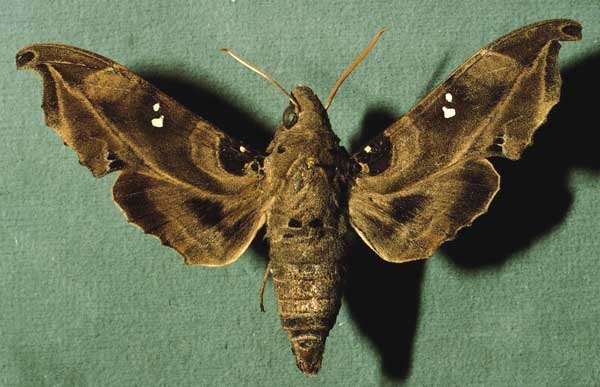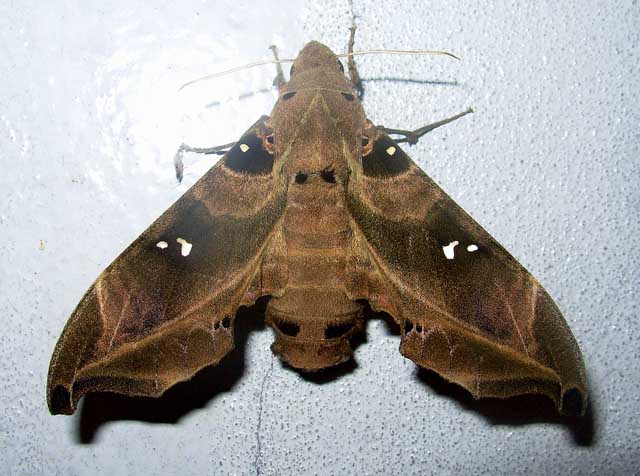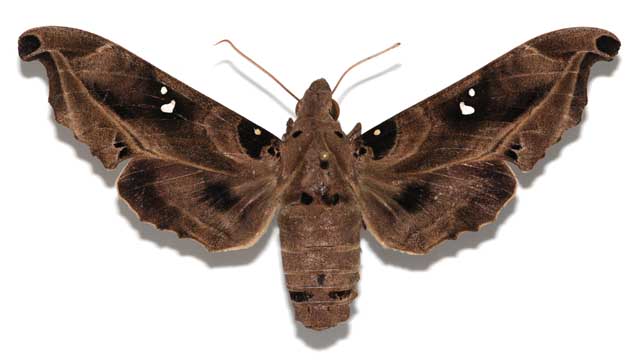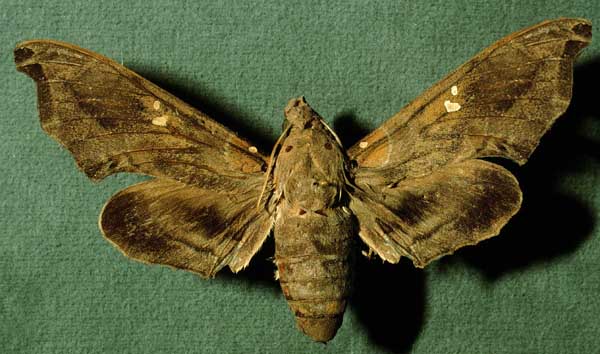
Madoryx bubastus bubastus male, Costa Rica, courtesy of Dan Janzen.
This site has been created by Bill Oehlke.
Comments, suggestions and/or additional information are welcomed by Bill.
TAXONOMY:
Family: Sphingidae, Latreille, 1802 |
|
|
Updated as per The Known Sphingidae of Costa Rica, November 2007 Updated as per personal communication with Jose Monzon (Peten, Guatemala); May 2009 Updated as per AN ANNOTATED CHECKLIST OF THE SPHINGIDAE OF BOLIVIA, December 2009 Updated as per CATE Sphingidae (Guyana, Venezuela, Ecuador, Argentina, Brazil, Nicaragua), May 11, 2011 Updated as per personal communication with Ezequiel Osvaldo Nunez Bustos (Yacutinga Private Reserve, Misiones, Argentina, September 11, 2010); September 27, 2011 Updated as per "A Hawk Moths fauna of southern Maranhao state, Brazil, ... "; NEVA: Jahrgang 34 Heft 3 November 2013; via Jean Haxaire; April 5, 2014 Updated as per personal communication with Sergio D. Rios Diaz in CATOLOGO DE LOS SPHINGIDAE (INSECTA: LEPIDOPTERA) DEPOSITADOS EN EL MUSEO NACIONAL DE HISTORIA NATURAL DEL PARAGUAY; sent to me in July 2014 by Sergio D. Rios Diaz. Updated as per personal communication with Ezequiel Bustos (Shilap revta. lepid. 43 (172) diciembre, 2015, 615-631 eISSN 2340-4078 ISSN 0300-5267), January 4, 2016 Updated as per Hawk-moths (Lepidoptera: Sphingidae) of Trinidad, West Indies: an illustrated and annotated list; Matthew J.W. Cock; April 2, 2022 |

This site has been created by Bill Oehlke.
Comments, suggestions and/or additional information are welcomed by Bill.
TAXONOMY:
Family: Sphingidae, Latreille, 1802 |
It flies as subspecies M. b. butleri in Mexico, Guatemala and Belize, and then probably as the nominate subspecies throughout the rest of Central America and into South America, probably as far south as Paraguay: Central: San Lorenzo (PS).
I see no reason why it would not be found in Nicaragua, Panama, Colombia and Peru.

Madoryx bubastus female, Yacutinga Private Reserve, Misiones, Argentina,
September 11, 2010, courtesy of Ezequiel Osvaldo Nunez Bustos.
A very acute angle is formed by two pales lines near the end of Rs4, the outer line ending at the tip of CuA1, and the inner line ending near the midpoint of the inner margin. The area bounded by these lines is dark. A broadly preapical, pale line, emanating from the costa, meets the pm line at an internal angle of slightly less than ninety degrees.
There are two dark brown spots, the smaller capping the larger, along the inner margin halfway between the pm line and the anal angle.

Madoryx bubastus butleri, Peten, Guatemala, courtesy of Jose Monzon.


Use your browser "Back" button to return to the previous page.
This page is brought to you by Bill Oehlke and the WLSS. Pages are on space rented from Bizland. If you would like to become a "Patron of the Sphingidae Site", contact Bill.
Please send sightings/images to Bill. I will do my best to respond to requests for identification help.
Enjoy one of nature's wonderments: Live Saturniidae (Giant Silkmoth) cocoons.
 Show appreciation for this site by clicking on flashing butterfly to the left. The link will take you to a page with links to many insect sites. |